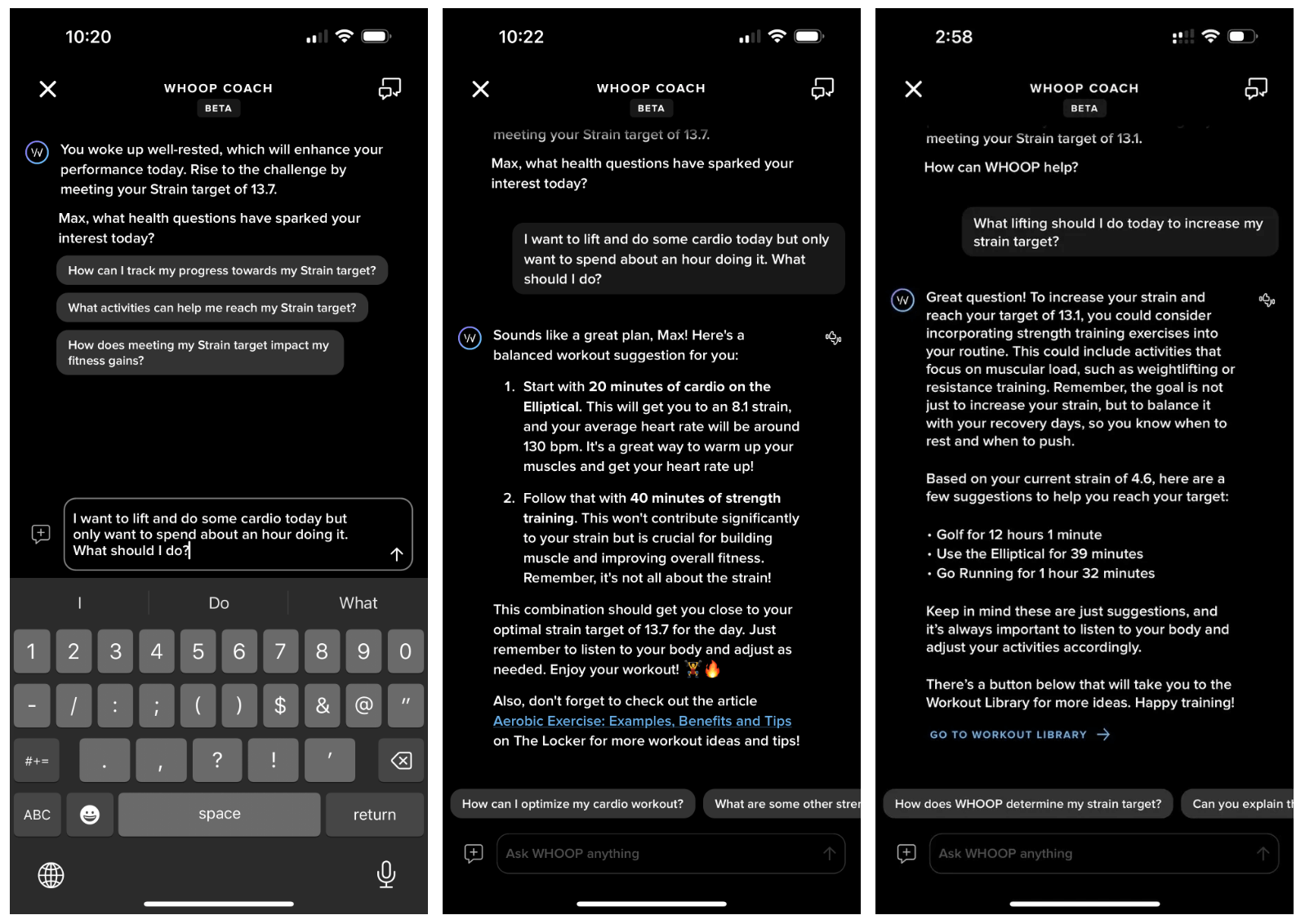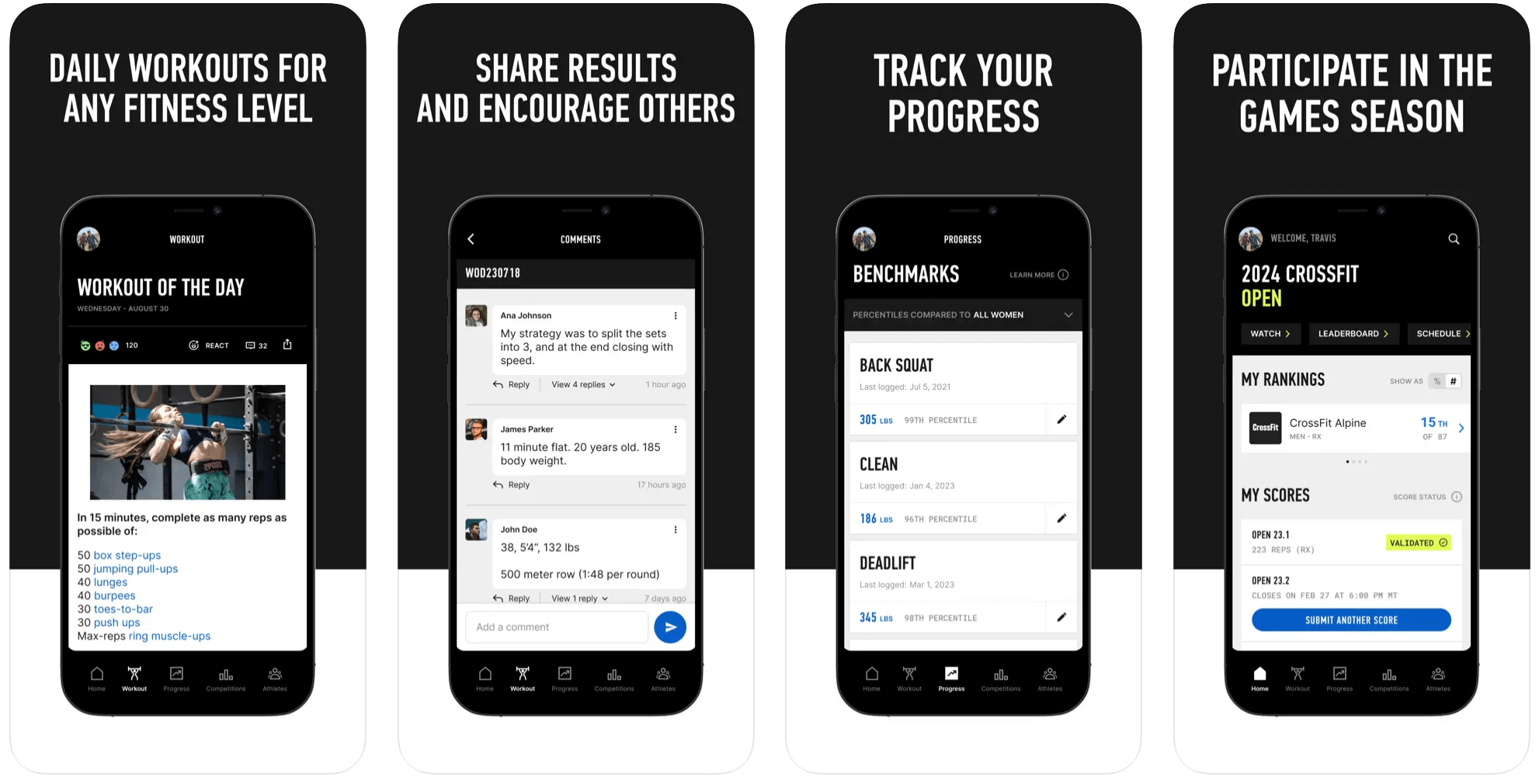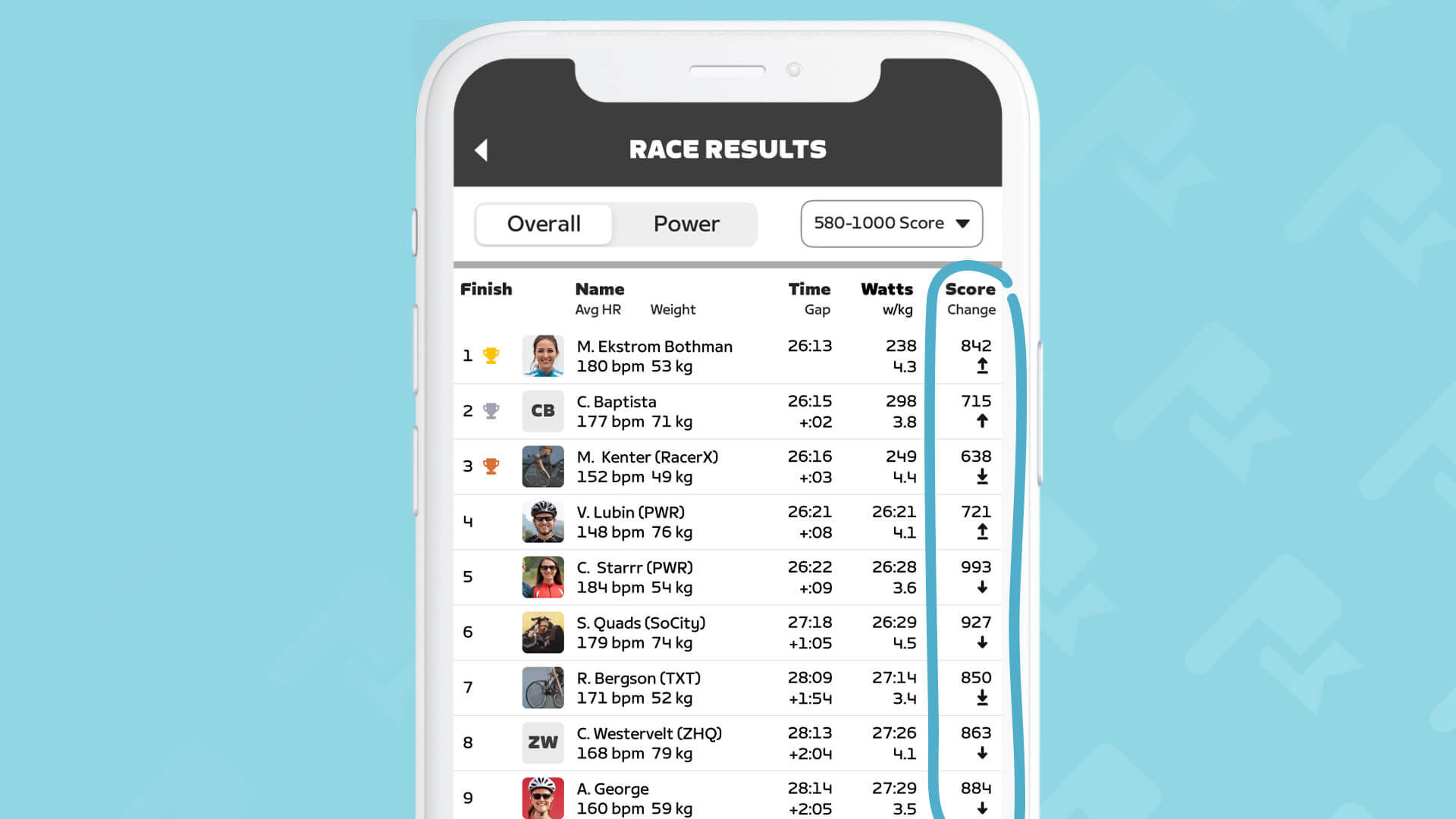We know that most readers expect us to portray a positive outlook on the connected fitness market. However, the reality is that this once-hyped category has hit a slump. Connected fitness app usage has stabilized, leaving companies struggling in a post-pandemic reality. But connected fitness products are still far from becoming obsolete — they're just entering a more mature phase. A phase where traditional playbooks don't work and startups need truly competitive moats to stay afloat and thrive.
We've rounded up trending survival strategies for connected fitness apps and high-level market trends that are shaping the next 12-24 months.
Key takeaways
- The connected fitness market is settling into a new normal, which can be considered a downturn compared to the pandemic boom, but is really the stabilization stage.
- Connected fitness platforms bank on hyper-personalization, holistic wellness and longevity programs, community-based experiences, and gamification to win big in a tough market.
- Advancements in artificial intelligence, software, and hardware set new benchmarks for connected fitness brands and allow them to scale workout programs across home, studio, and hybrid environments.
Anyway, what is connected fitness?
Connected fitness runs on a combination of smart fitness equipment, digital platforms, and data technologies to innovate, personalize, and unify sports, fitness, and wellness activities — both at home and in gyms. Here's a closer look at the key components of connected fitness experiences:
- Smart equipment — Bikes, treadmills, mirrors, strength systems, and other machines that are kitted out with screens, sensors, and connectivity.
- Software and apps — On-the-go solutions that deliver on-demand or live workouts, performance analytics, and training programs.
- Wearables and sensors — Devices that collect crucial fitness metrics, like heart rate, motion, and sleep, and hand over that data to paired apps or connected gym equipment.
- Content — Community elements, game mechanics, and interactive elements that keep things fun and engaging for users to push through their workouts.
The state of the connected fitness market and future outlook
Over the last two years, connected fitness has been framed by a doom narrative. Shrinking funding, a slight decrease in the number of connected fitness users, and the broader slowdown, which can be attributed to low-priced (HVLP) gyms like Planet Fitness and Crunch Fitness, have fueled the criticism.
But while connected fitness apps might have cooled after the pandemic, it is still a strong segment. Over 70% of gym-goers are looking for hybrid experiences, and about half of them are combining digital fitness services with their gym memberships. Along these lines, mid- and premium-tier gyms double down on smart hardware to rival HLVP offers, fueling the connected equipment market.
Overall, the global connected gym equipment market size stood at $1,228 million in 2024 and is slated to surpass $9,986 million by 2033, growing at a compound annual growth rate of 26.20%. This trajectory is well above the 8.83% CAGR seen in the traditional gym segment.
Bottom line: the experts say that the connected fitness market is unlikely to replicate the success it had 5 years ago. But people are still looking for ways to work out that fit their schedules, and hybrid fitness experiences definitely meet the need.
Top six trends to watch in 2026
As the market continues to stabilize, fitness companies go out of their way to deliver more engaging and competitive experiences that outshine their competitors and help them capture a larger market share during the market bifurcation. Let's see which and how connected fitness market trends will dominate the scene in 2026.
AI-powered hyper-personalization
In the fitness industry, personalization is a baseline expectation. But in the connected fitness space, it's absolutely fundamental, because most of the time the user is alone with a screen and there is no human trainer to shout "add more weight" or "let's take it easy today".
Artificial intelligence bridges this gap, delivering experiences that don't just factor in an individual's workout performance but consider the whole person to create truly adaptive, hyper-personalized programs with curated content. Advancements in generative AI and large language models have helped companies enhance their offerings in this field.
Here's how leading and innovative connected fitness brands leverage AI to add a human touch:
- As part of the line-up overhaul, Peloton debuted its brand new AI and computer vision system that guides users on their health and fitness journeys across all Peloton equipment.
- Driving a 7% increase in retention rates, Echelon's AI analyzes unique user data, including heart rate, workout history, and preferences, to serve a dynamic, hyper-personalized fitness experience.
- iFIT harnessed advancements in AI to localize its Emmy-nominated content into multiple languages for global markets.
Beyond adaptive workout guidance, artificial intelligence also drives another micro-trend: continuous feedback loops. By pulling biometric data from connected fitness devices, AI monitors sleep, stress, and recovery metrics to prescribe personalized fitness plans that align with the user's current physiological state, not just their long-term goals.
Whoop Coach, an advanced generative AI feature and assistant, draws on the member's profile, wearable data, and the latest performance science to deliver personalized, real-time feedback on strain, recovery, and sleep goals, tailored to the user's unique physiology.

WHOOP Advanced Labs takes this personalized approach up a notch by combining blood testing with continuous wearable data to paint a complete picture of health and add even more value to daily coaching.
Focus on holistic health metrics and longevity
Over 80% of U.S. consumers now consider wellness a top or important priority in their everyday lives. That's because the mindset of fitness users is shifting from wanting to “crush it” to taking a more mindful, holistic approach to working out that can heal their body and mind.
The biomarker revolution, the rise of weight-loss GLP-1, active aging, and the growing recognition of exercise as a prescription are all powering this shift toward longevity and toward viewing workouts as part of the bigger picture of lifelong health.
This trend unfolds in multiple directions:
- Going strong with its motion analysis capabilities, Tonal began pilots with physical therapy operators who can leverage its platform to improve patient outcomes.
- Combining longevity and a woman-first approach, leading fitness brands like Oura and Garmin adjust their fitness offerings to better meet the unique fitness and wellness needs of women. For example, Oura has expanded its suite of AI-driven health tracking features for women’s health, adding next-generation Pregnancy Insights and Perimenopause Check-In.
- In its quest to transform healthcare, EGYM has been advancing its corporate wellness program, Wellness Network.
- Technogym, the Italian fitness equipment and tech brand, pioneered Technogym Checkup, which allows users to test their physical and cognitive condition and get precise workout plans delivered through the Technogym Ecosystem across cardio, strength, and functional equipment.
Overall, connected fitness platforms are moving to a balanced approach, combining physical exercise with emotional and mental health.
To encourage a deeper connection with the body's movements and sensations, Samsung announced new features for the Galaxy Watch that focus on sleep, fitness, and healthy aging. The Galaxy Watch8 series introduced Antioxidant Index, a trailblazing feature that measures carotenoid levels in the skin using the innovative sensor.

By analyzing vascular load and sleep, the Samsung Watch further guides the user on their journey toward long-term wellness. The company is also working on a Galaxy Watch-led patient health portal that would enable health professionals to influence behavioral nudges.
Over the last year, Ultrahuman, the global health technology company behind the Ring AIR wearable, has been actively expanding its wellness features through strategic acquisitions and new feature launches. The biohacking tech leader augmented its tech with advanced cycle and ovulation tracking, a science-backed aging marker, and a new marker for brain recovery.

Community-based fitness
Around 70% of individuals search for online fitness communities, with many taking matters into their own hands and creating groups on Facebook and Reddit. For many people, the sense of togetherness and the need for social interaction are as important as the workout itself, and this demand is addressed by many fitness platforms that foster a sense of belonging through camaraderie features.
By experiencing peer pressure, users feel more inspired and motivated to achieve their fitness goals. CrossFit leans into this basically evergreen trend and combines fitness, nutrition, and community to create a network where users can connect with each other, share their progress, get guidance, and exercise together. CrossFit's app promotes healthy social pressure through leaderboards, benchmarks, and challenges.

Zwift, a connected cycling platform that allows users to ride against others, is also following this trend. Its competition feature, Racing Score, matches participants based on similar abilities.

Gamification and immersive experiences to boost retention
Attracting users to the product is only half the battle for connected fitness apps. The real challenge is retaining those users and keeping them engaged beyond the day-15 retention checkpoint. To that end, brands tap into game mechanics, virtual and augmented reality, and social competition features to transform the fitness experience from duty into exciting, habit-forming missions.
Let's have a look at how leading connected fitness brands keep things fun:
- Stemming from the gaming world, dynamic difficulty adjustment has also made its way into connected fitness with AI as the core enabler. This technique allows fitness apps to adjust workout intensity in real time if the user is struggling to keep pace. Peloton's Pace Targets, which enable users to customize class difficulty, are an early example of this technique.
- Real-time form correction is another manifestation of gamified experiences. Tonal's Smart View feature analyzes and visualizes user movement during each rep and provides real-time guidance on how to exercise more effectively.
- Echelon's Virtual Worlds immerse users in a 3D environment where they can choose avatars, explore AI leaderboards, and race against each other, with the terrain on the screen changing in real time. Lately, the Virtual Worlds system has become a part of the new FitOS platform that unites entertainment, apps, gamified racing, and workout statistics within a single interface.
Virtual reality has also become a go-to co-pilot technology for apps designed for physiotherapy and rehabilitation activities, such as Neuro Rehab VR, AppliedVR, and XRHealth.
Open ecosystems for an omnichannel experience
The ingredients for connected fitness success are evolving, rotating from all-in-one Apple-like bundles to Android-similar ecosystems. Serving more exercisers over end-to-end integration, content and software developers collaborate with hardware companies to create integrated fitness experiences that allow users to sync their data across various platforms.
Technogym, an Italian-based gym equipment provider, is often cited as a pioneer behind connected wellness ecosystems. Along with in-house content production, direct-to-consumer offerings, and commercial sales, the company created business management software for gyms. Users can log into the Technogym ecosystem and activate a personalized training program wherever they are — at home, at the gym, outdoors, or elsewhere.
F45 Training, a leading fitness community, has also brought it all under one roof by uniting its F45 Training, FS8, VAURA Pilates, and recovery offerings into a singular wellness ecosystem.
Summing up
The connected fitness industry has shifted significantly since its pandemic-era boom. However, consumers still want to exercise on their own terms, and connected fitness solutions fit this narrative. To survive and thrive, connected fitness companies bet on hyper-personalization, holistic wellness experiences, and community-driven engagement, with gen AI, data intelligence, and immersive technologies as core tech enablers.
If you're looking to level up your fitness tech game and develop state-of-the-art connected fitness solutions, partnering with one of the top fitness app development companies is essential. At Orangesoft, we specialize in bridging the gap between fitness hardware and software, ensuring your app meets and exceeds modern user expectations. Get in touch for a free estimate of your connected fitness project.
